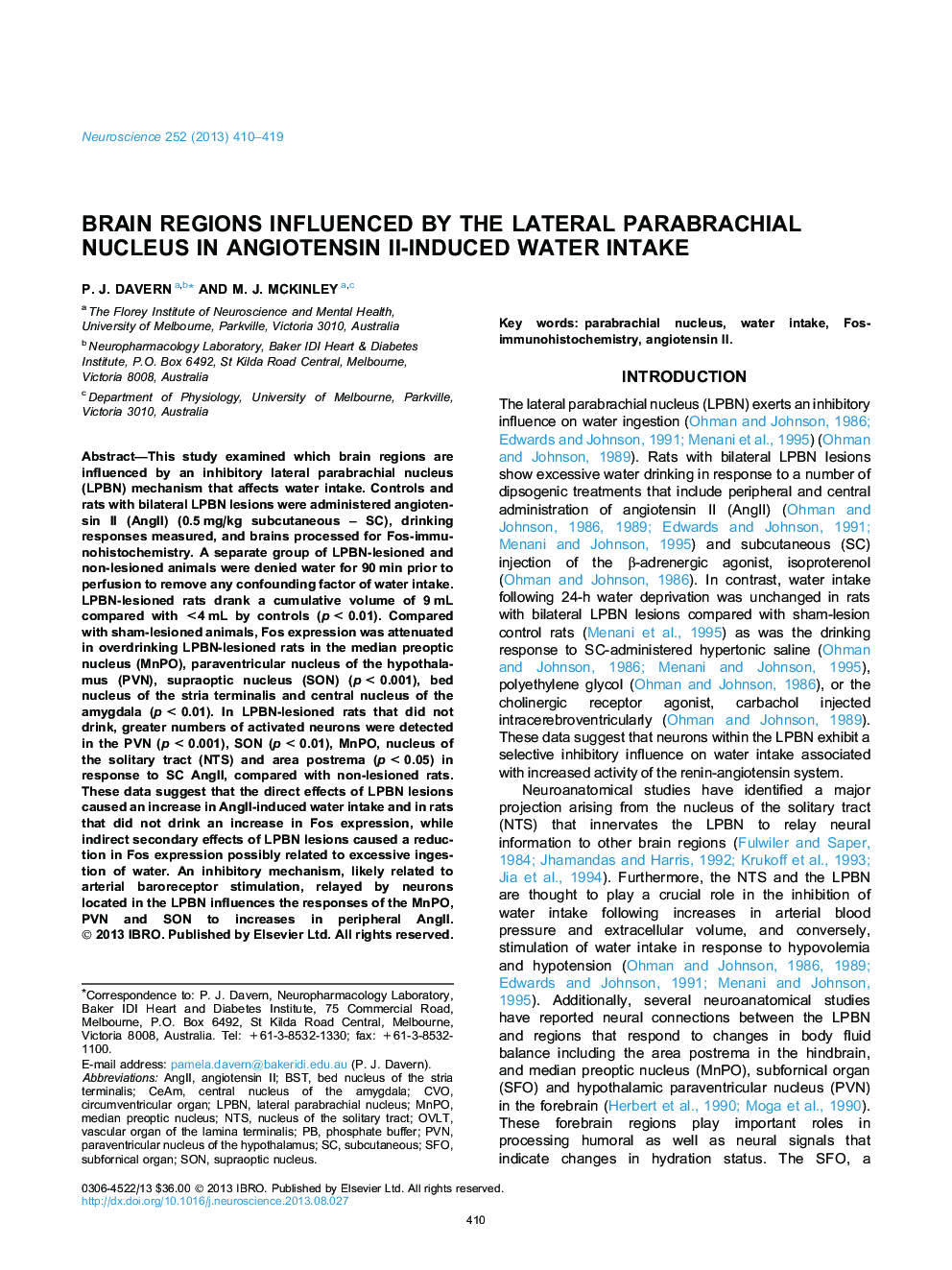| Article ID | Journal | Published Year | Pages | File Type |
|---|---|---|---|---|
| 4337824 | Neuroscience | 2013 | 10 Pages |
•LPBN lesions increase AngII-induced water intake and reduce forebrain Fos.•Reduction in Fos is secondary to lesions possibly due to excessive water ingestion.•LPBN lesions directly increase AngII-induced Fos in rats without water.•LPBN influences the MnPO, PVN and SON to increases in peripheral AngII.•LPBN inhibitory mechanism is likely related to arterial baroreceptor stimulation.
This study examined which brain regions are influenced by an inhibitory lateral parabrachial nucleus (LPBN) mechanism that affects water intake. Controls and rats with bilateral LPBN lesions were administered angiotensin II (AngII) (0.5 mg/kg subcutaneous – SC), drinking responses measured, and brains processed for Fos-immunohistochemistry. A separate group of LPBN-lesioned and non-lesioned animals were denied water for 90 min prior to perfusion to remove any confounding factor of water intake. LPBN-lesioned rats drank a cumulative volume of 9 mL compared with <4 mL by controls (p < 0.01). Compared with sham-lesioned animals, Fos expression was attenuated in overdrinking LPBN-lesioned rats in the median preoptic nucleus (MnPO), paraventricular nucleus of the hypothalamus (PVN), supraoptic nucleus (SON) (p < 0.001), bed nucleus of the stria terminalis and central nucleus of the amygdala (p < 0.01). In LPBN-lesioned rats that did not drink, greater numbers of activated neurons were detected in the PVN (p < 0.001), SON (p < 0.01), MnPO, nucleus of the solitary tract (NTS) and area postrema (p < 0.05) in response to SC AngII, compared with non-lesioned rats. These data suggest that the direct effects of LPBN lesions caused an increase in AngII-induced water intake and in rats that did not drink an increase in Fos expression, while indirect secondary effects of LPBN lesions caused a reduction in Fos expression possibly related to excessive ingestion of water. An inhibitory mechanism, likely related to arterial baroreceptor stimulation, relayed by neurons located in the LPBN influences the responses of the MnPO, PVN and SON to increases in peripheral AngII.
